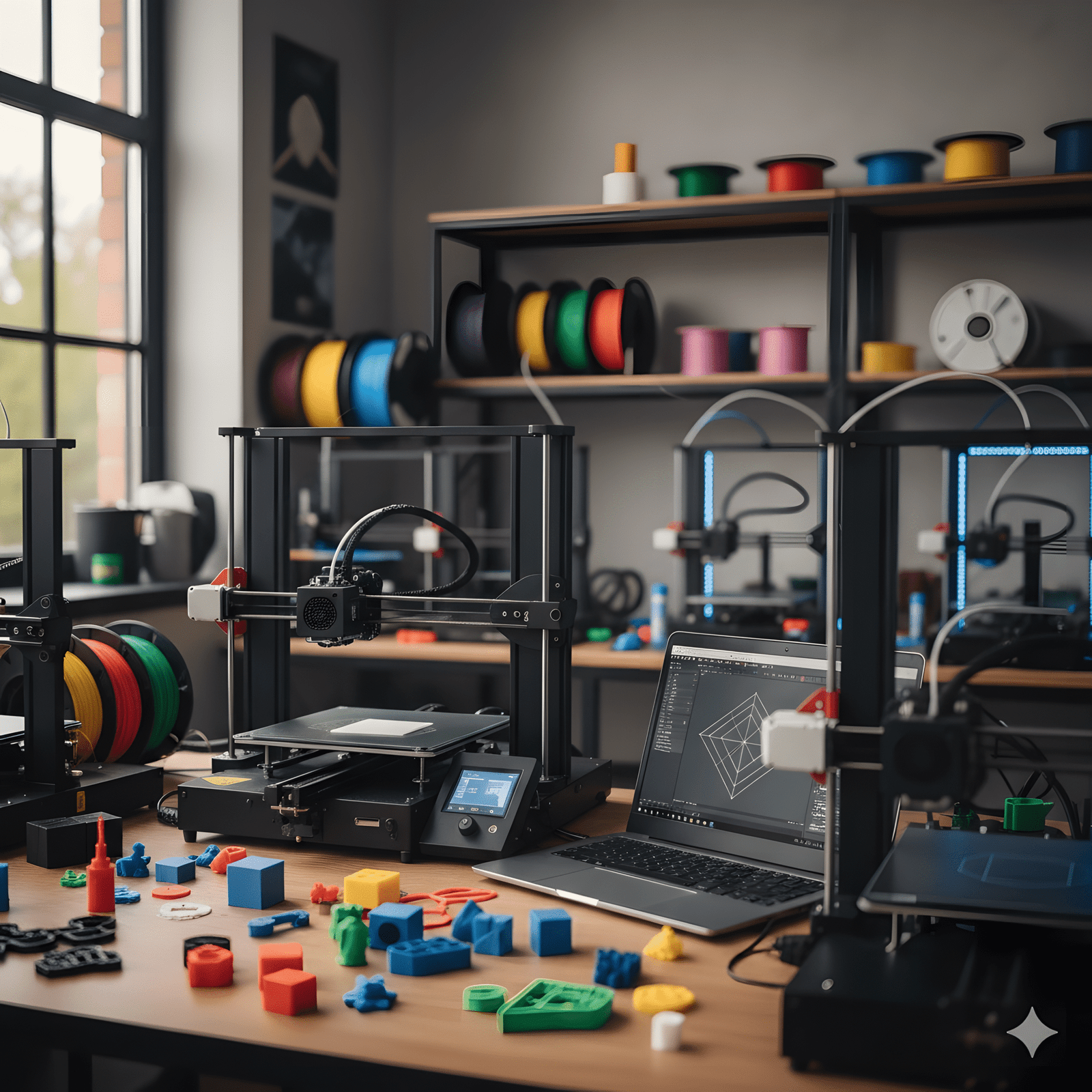Your cart is currently empty!

Embarking on Your 3D Printing Journey: Tips for Beginners
So, you’ve decided to dive into the exciting world of 3D printing! Whether you’re a hobbyist looking to bring your creations to life or an aspiring innovator, 3D printing offers a universe of possibilities. But like any new skill, it comes with a learning curve. Don’t worry, we’ve all been there! To help you get started on the right foot, here are some essential tips for beginners in 3D printing.
- Start Simple and Master the Basics
It’s tempting to jump straight into printing intricate models, but patience is key. Begin with simpler designs and small prints. This allows you to understand the fundamental mechanics of your printer, such as bed leveling, filament loading, and basic slicer settings (more on that next!). Printing simpler objects will also help you identify and troubleshoot common issues without the added complexity of a challenging model. Think calibration cubes, small figures, or practical household items.
- Get to Know Your Slicer Software
Your 3D printer’s “brain” is its slicer software. This program takes your 3D model (usually an STL file) and converts it into G-code, a set of instructions your printer understands. Popular slicers include Cura, PrusaSlicer, and Simplify3D. Spend time exploring its features: layer height, infill density, print speed, supports, and adhesion settings. Experiment with these parameters on simple prints to see how they affect the final outcome. Many online tutorials and communities can guide you through optimizing your slicer settings for various filaments and models.
- Proper Bed Adhesion is Your Best Friend
One of the most common frustrations for beginners is prints failing due to poor bed adhesion. If your first layer doesn’t stick well to the print bed, your entire print can shift or warp. Ensure your print bed is clean – a quick wipe with isopropyl alcohol often does wonders. Depending on your bed type, you might also use adhesives like glue sticks, hairspray, or specialized print surfaces. Don’t underestimate the importance of proper bed leveling; an uneven bed is a guaranteed recipe for failed prints.
- Understand Your Filament
Not all filaments are created equal. PLA (Polylactic Acid) is generally recommended for beginners due to its ease of use, low warping, and minimal odor. However, as you advance, you might explore PETG, ABS, or even more exotic materials. Each filament has optimal printing temperatures (for both nozzle and bed), cooling requirements, and material properties. Always refer to the manufacturer’s recommendations and be prepared to adjust your slicer settings accordingly when switching filament types.
- Join the Community and Embrace Troubleshooting
The 3D printing community is incredibly vast and supportive. Online forums, social media groups, and local meetups are invaluable resources. Don’t be afraid to ask questions or share your experiences – both successes and failures. Troubleshooting is an inherent part of 3D printing. When a print fails, try to understand why. Was it bed adhesion? Clogging? Incorrect temperature? Each failed print is a learning opportunity that brings you closer to mastering the craft.
Happy printing, and enjoy the journey of bringing your digital designs into the physical world!
One response to “Embarking on Your 3D Printing Journey: Tips for Beginners”
-
Thanks for these beginner-friendly tips! Going to pick a simple first project and just print rather than worry about perfection.

Leave a Reply